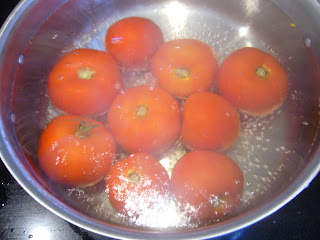A lot has been written this year about more and more people turning to gardening as a way to reduce food costs. The idea – buy some inexpensive seeds, throw them in the ground and voila – abundant, fresh food. We all know it isn’t quite that easy, but intuitively, we believe that vegetable gardening can be cost-effective.
A couple weeks ago, the Washington Post ran an
article in the Sunday business section that argued against gardening as a money saving strategy.
While the National Gardening Association claims that the average gardener saves more than $500 a year, the author thinks that the association has inflated the price of purchased vegetables (they assume an average of $2/pound). The author argues that $1/pound is more reasonable. I'm not so sure. While I certainly can get some vegetables for $1/pound; good tomatoes are NEVER that cheap where I live, and I certainly can’t get organic food for that price.
Her second argument is that vegetable gardeners are not saving money because they are growing more vegetables than they actually eat. Apparently, the average garden produces more vegetables than the average American family would consume over the growing season. The author thinks very few people are canning or
preserving vegetables in another way, so people must either be giving away some vegetables, or wasting them.
I think a better explanation is that families with a vegetable garden eat more vegetables than the "average American family". I know that our vegetable consumption has gone up significantly since we started our garden. We eat about 80% of our harvest, give away about 15% and waste maybe 5%. And because we are eating
so many vegetables, there is less room for meat on our plate, further lowering our food costs.
Does home gardening save money? I think so. But there are lots of other reasons to start your garden – a connection to nature and the seasons, access to the freshest food possible, the chance to reduce your carbon footprint – and many more I am sure I have forgotten.
For another perspective on the home vegetable gardening trend, check out this recent blog entry at
Garden Rant.


















